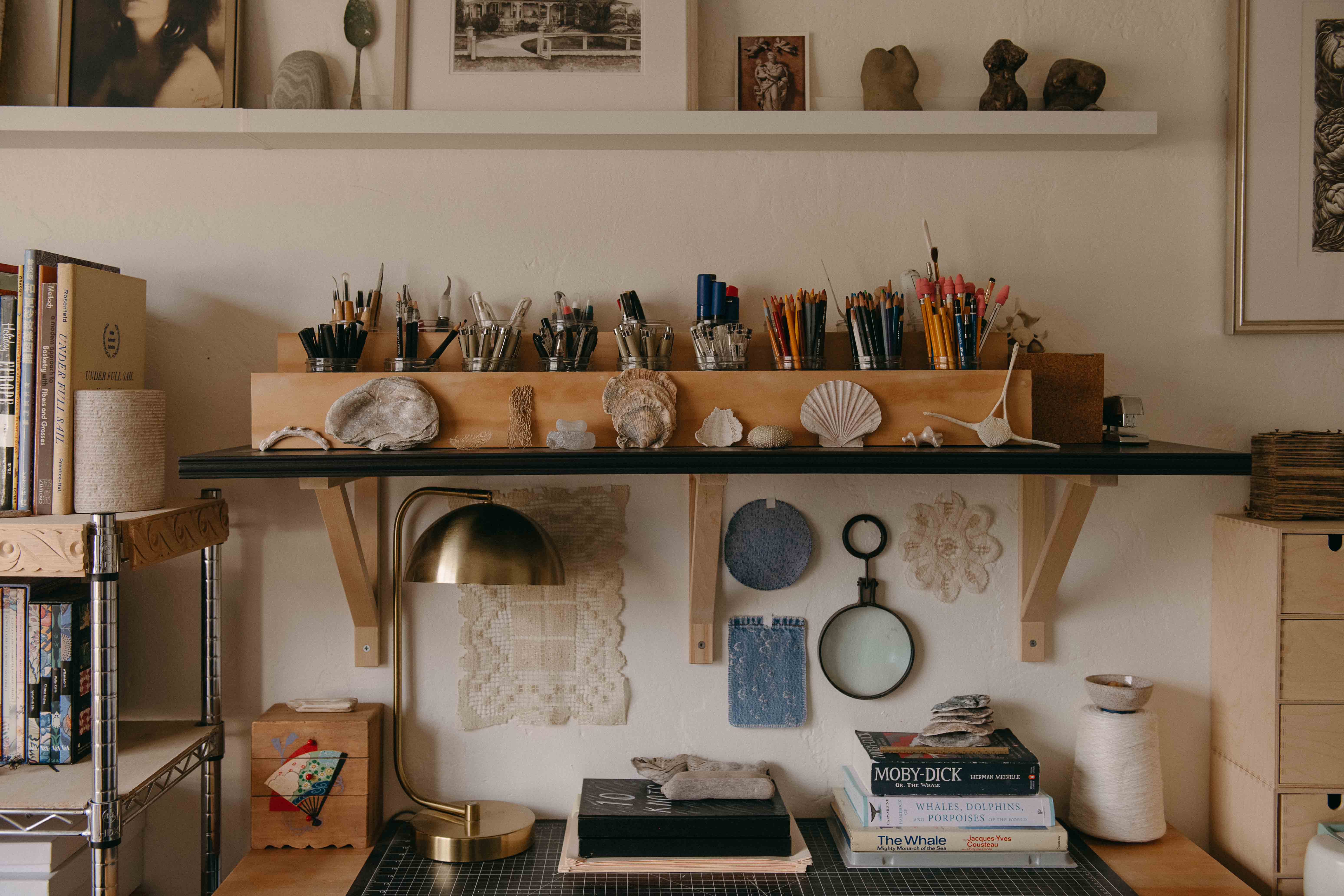
Photo: Cara Robbins

Photo: Cara Robbins
Eliot Spaulding is a California-based visual artist with a focus on sustainability, craft, and community, who believes in the power of art to cross disciplines, and be a catalyst for social and environmental change.
Previously working as a commercial installation artist for nearly a decade provided Eliot with a firsthand view of the overconsumption and waste created within the fashion industry, inspiring a desire to bring the conversation of sustainability to the forefront of her personal practice. Deriving inspiration from the folk and decorative arts, her work utilizes familiar historical craft techniques as a visual language in which to further explore critical environmental and social quandaries of our time.
Residing in her hometown of Santa Barbara, California, Eliot takes weekly ritualistic trips to the ocean where she gathers inspiration, studies the local geology, documents her findings, and collects washed-up waste. She enjoys the challenge of working with discarded materials, aiming to transform and elevate them beyond their perceived limitations.
Eliot received her BFA from Chapman University cum laude with Departmental Honors and an emphasis in 3D Environmental Display. During her tenure as a Display Artist for major retailer Anthropologie, Eliot ideated and created one-of-a-kind art installations and window displays throughout stores across the country as a member of a select traveling team of artists. She enjoyed mentoring interns and assistants, and hosting free community workshops where she taught a variety of craft techniques involved in making large-scale works. Through her subsequent freelance business, Eliot designed and created numerous bespoke installations for corporate campaigns and headquarters, boutiques, private homes, and nonprofit fundraiser events for organizations such as Planned Parenthood and CASA. She served as a member of the Contemporaries Committee for the Museum of Contemporary Art Santa Barbara for several years until its temporary closure in 2020.
During the Pandemic Eliot adapted, and launched a painting and illustration studio practice from her apartment, selling hundreds of works to clients worldwide, but ultimately found herself craving a return to her installation roots. In 2022, the concept for her emergent, public installation work ‘10 Knots’ earned her a scholarship for further development in Venice, Italy. She is in the prototyping phase of this expansive installation project, and beginning to execute the related community outreach workshops. Presently Eliot is enjoying her time as Artist in Residence at Taft Gardens & Nature Preserve in Ojai, California.
Previously working as a commercial installation artist for nearly a decade provided Eliot with a firsthand view of the overconsumption and waste created within the fashion industry, inspiring a desire to bring the conversation of sustainability to the forefront of her personal practice. Deriving inspiration from the folk and decorative arts, her work utilizes familiar historical craft techniques as a visual language in which to further explore critical environmental and social quandaries of our time.
Residing in her hometown of Santa Barbara, California, Eliot takes weekly ritualistic trips to the ocean where she gathers inspiration, studies the local geology, documents her findings, and collects washed-up waste. She enjoys the challenge of working with discarded materials, aiming to transform and elevate them beyond their perceived limitations.
Eliot received her BFA from Chapman University cum laude with Departmental Honors and an emphasis in 3D Environmental Display. During her tenure as a Display Artist for major retailer Anthropologie, Eliot ideated and created one-of-a-kind art installations and window displays throughout stores across the country as a member of a select traveling team of artists. She enjoyed mentoring interns and assistants, and hosting free community workshops where she taught a variety of craft techniques involved in making large-scale works. Through her subsequent freelance business, Eliot designed and created numerous bespoke installations for corporate campaigns and headquarters, boutiques, private homes, and nonprofit fundraiser events for organizations such as Planned Parenthood and CASA. She served as a member of the Contemporaries Committee for the Museum of Contemporary Art Santa Barbara for several years until its temporary closure in 2020.
During the Pandemic Eliot adapted, and launched a painting and illustration studio practice from her apartment, selling hundreds of works to clients worldwide, but ultimately found herself craving a return to her installation roots. In 2022, the concept for her emergent, public installation work ‘10 Knots’ earned her a scholarship for further development in Venice, Italy. She is in the prototyping phase of this expansive installation project, and beginning to execute the related community outreach workshops. Presently Eliot is enjoying her time as Artist in Residence at Taft Gardens & Nature Preserve in Ojai, California.

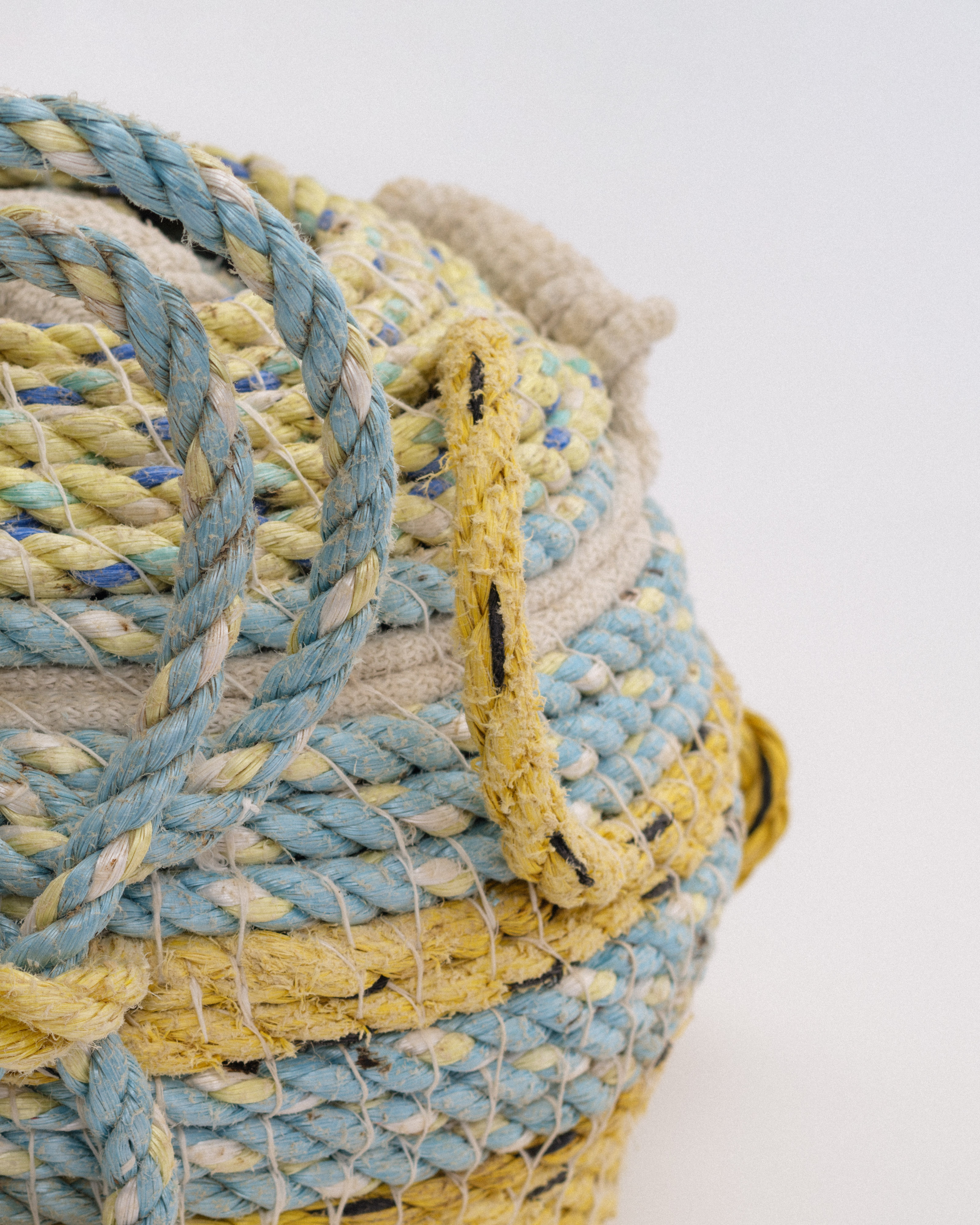
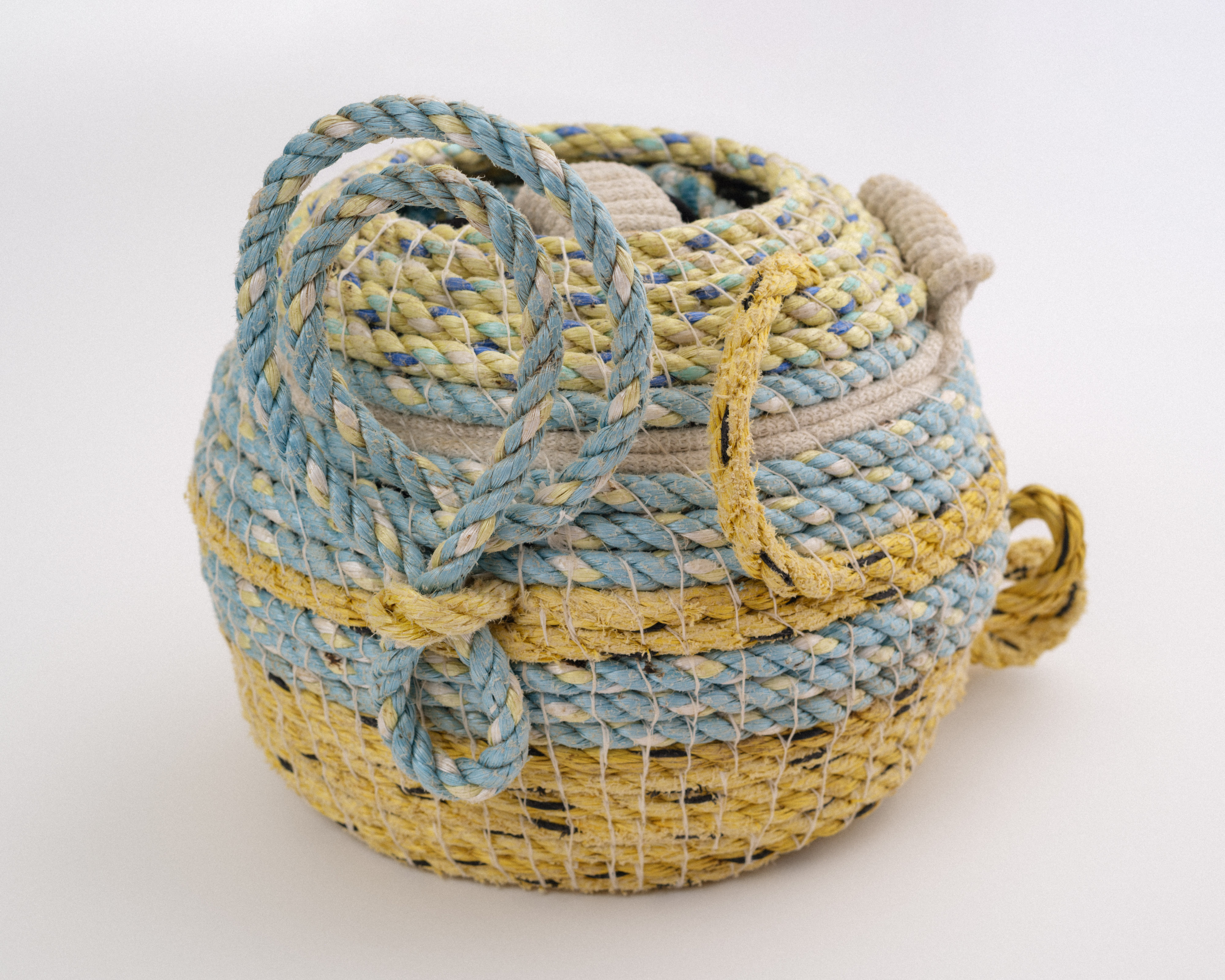
Salt Coil III
Lobster trap line marine waste, waxed cotton twine14” x 12” x 11”
2023


Salt Coil II
Lobster trap line marine waste, waxed cotton twine5” x 9” x 7.25”
2023
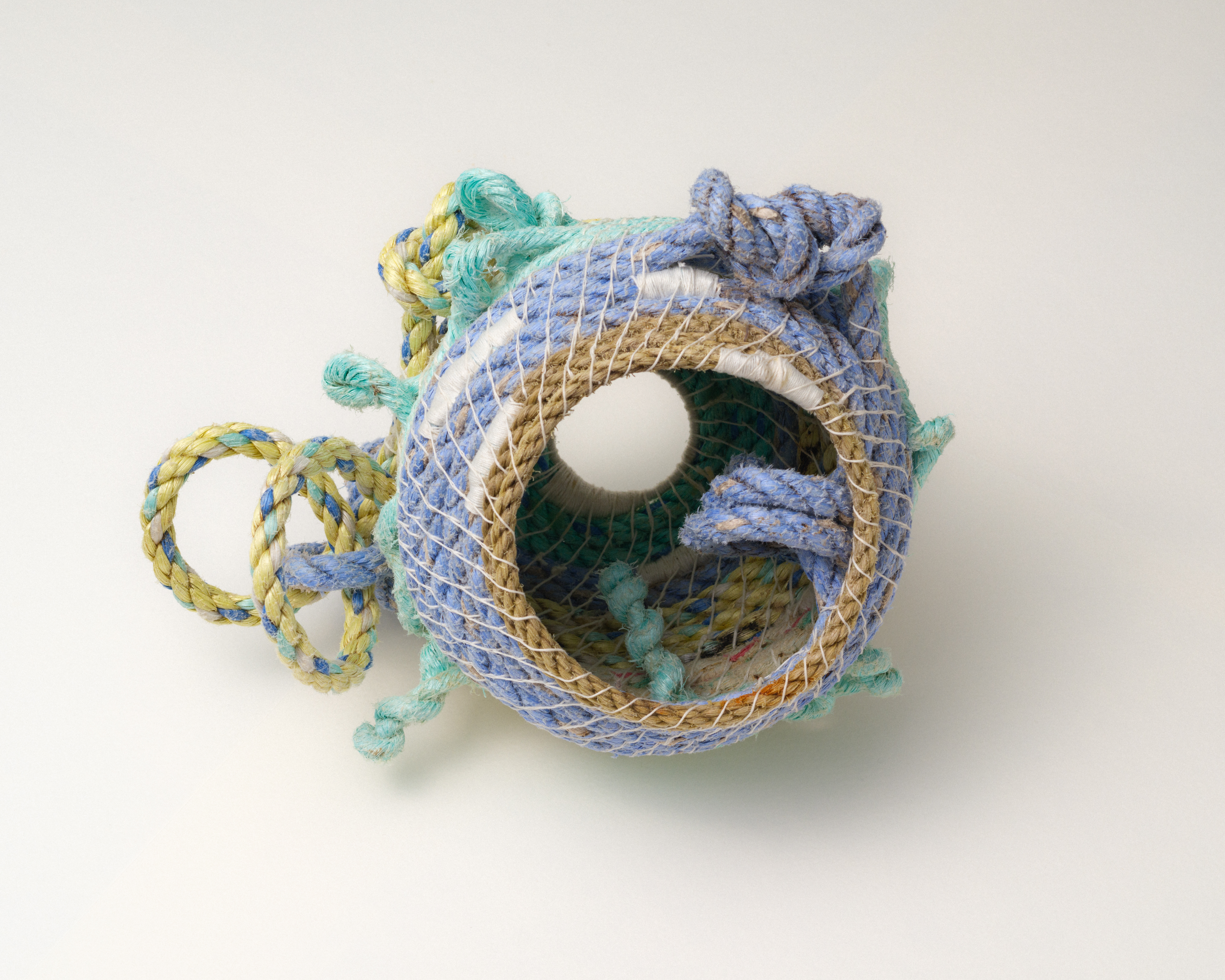


Salt Coil
Lobster trap line marine waste, waxed cotton twine7” x 8” x 11”
2023

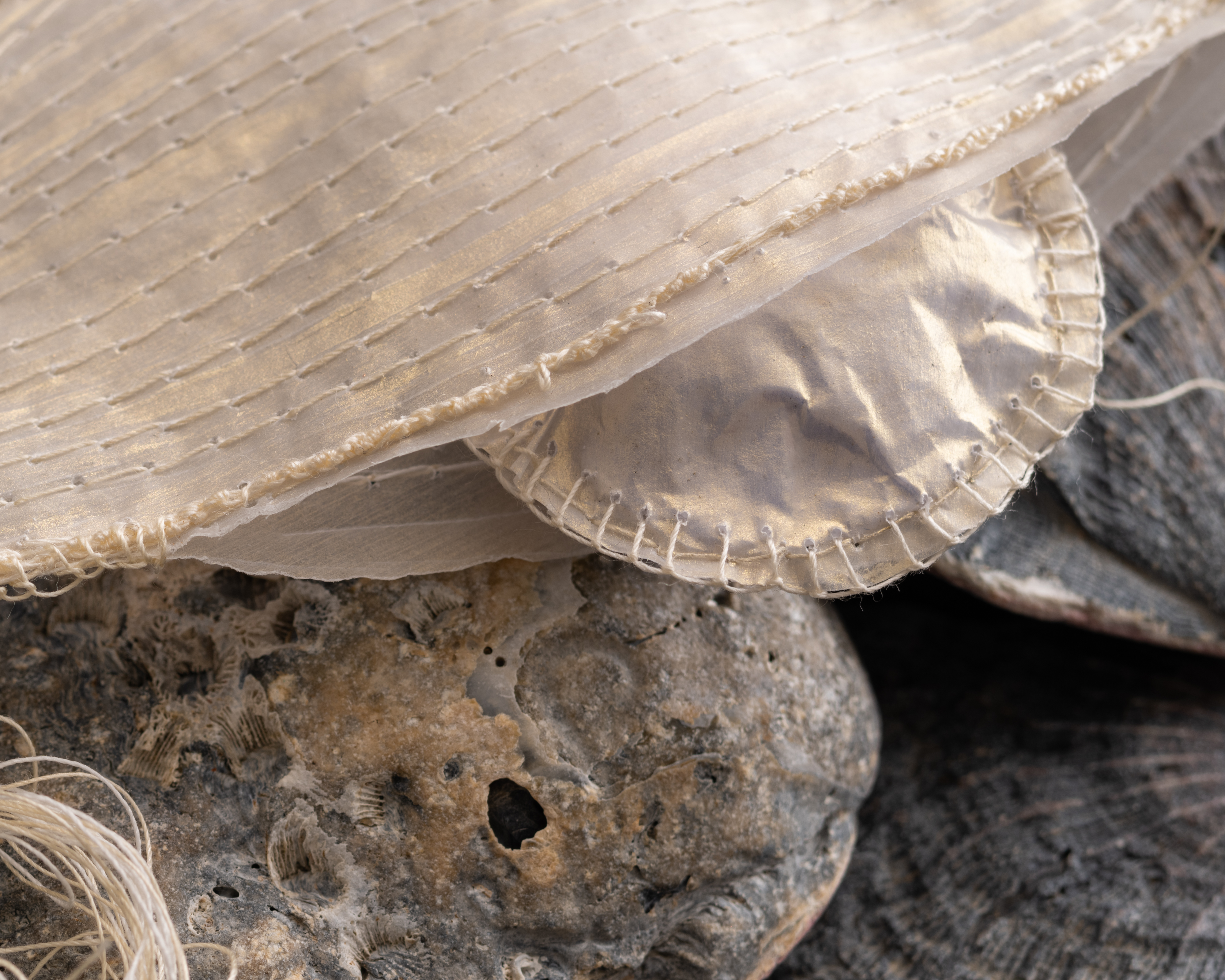
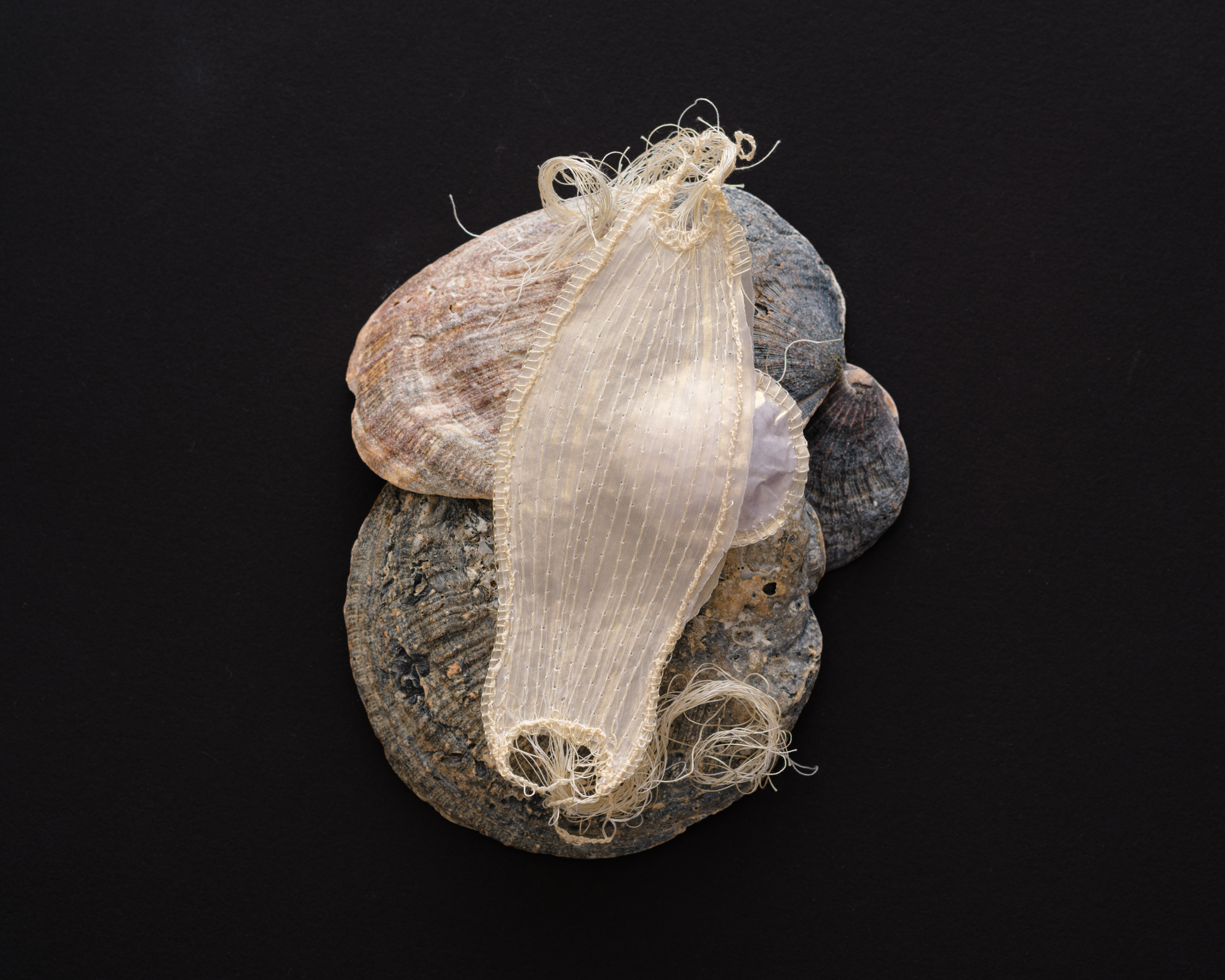
Mermaid Purse
Tracing paper, paint, upcycled cotton thread1” x 3” x 7”
2023